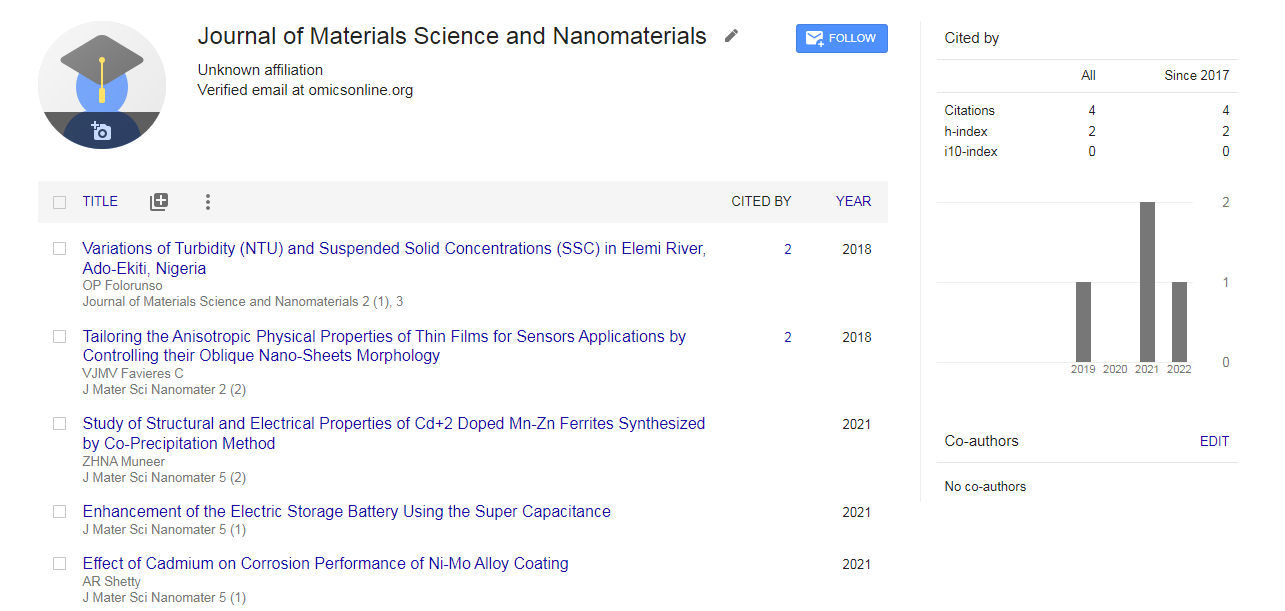Our Group organises 3000+ Global Conferenceseries Events every year across USA, Europe & Asia with support from 1000 more scientific Societies and Publishes 700+ Open Access Journals which contains over 50000 eminent personalities, reputed scientists as editorial board members.
Open Access Journals gaining more Readers and Citations
700 Journals and 15,000,000 Readers Each Journal is getting 25,000+ Readers
Google Scholar citation report
Citations : 8
Journal of Materials Science and Nanomaterials received 8 citations as per Google Scholar report
Useful Links
Recommended Journals
Related Subjects
Share This Page
Spectroscopic investigation of metal oxide nanoparticles reduction mechanism in CLC process
36th International Conference on NANOMATERIALS AND NANOTECHNOLOGY
Hayder Alalwan
Middle Technical University, Iraq
ScientificTracks Abstracts: J Mater Sci Nanomater
Abstract
Transition metal oxide nanoparticles were used as oxygen carriers chemical looping combustion (CLC), a promising indirect combustion process that facilitates carbon capture. The focus of the investigation was to identify the reduction mechanism of the transition metal oxides during CLC using a continuous flow through system and spectroscopic, microscopic, and thermo gravimetric analysis. The comparison of the reactivity of copper (CuO), iron (�±-Fe2O3) and cobalt (Co3O4) oxides with methane (CH4) in CLC reveals a link between the solid-state reduction mechanism of CLC oxygen carriers and their size-dependent reactivity toward CH4. The results show that the reactivity of CuO and Co3O4 are independent of the particle size, with reduction following the nucleation and nuclei growth (NNG) model, whereas �±-Fe2O3 shows increased reactivity with decreasing particle size and reduction follows the unreacted shrinking core (USC) model. Supported by density functional theory (DFT) calculations comparing relative energies of formation for surface and bulk oxygen defects, we propose a conceptual framework for the sizedependence of metal oxide oxygen carriers for CLC. For oxygen carriers that reduce via the NNG model, where reduction initiates within the particle core, there will be no size dependence. For reduction via the USC model, where reduction initiates on the particle surface, reactivity will increase for smaller particles. These findings can guide development of metal oxide oxygen carriers for CLC by establishing trends in size-dependent behavior.Biography
Dr. Hayder Alalwan has a PhD in chemical Engineering from the University of Iowa (2018) and he is currently the Chairman of Petrochemical Techniques department at the Middle Technical University -Iraq and he is the founder of this department. He has more than 34 publishing manuscripts in prestigious scientific journals and his H-index in Scopus is 17. His work focus on nanoparticles and their applications as adsorbents, catalysts, oxygen carriers, and other applications. His work is very relevant to environment with focusing on clean energy, minimizing pollutions and the treatment of water and wastewater.

 Spanish
Spanish  Chinese
Chinese  Russian
Russian  German
German  French
French  Japanese
Japanese  Portuguese
Portuguese  Hindi
Hindi 